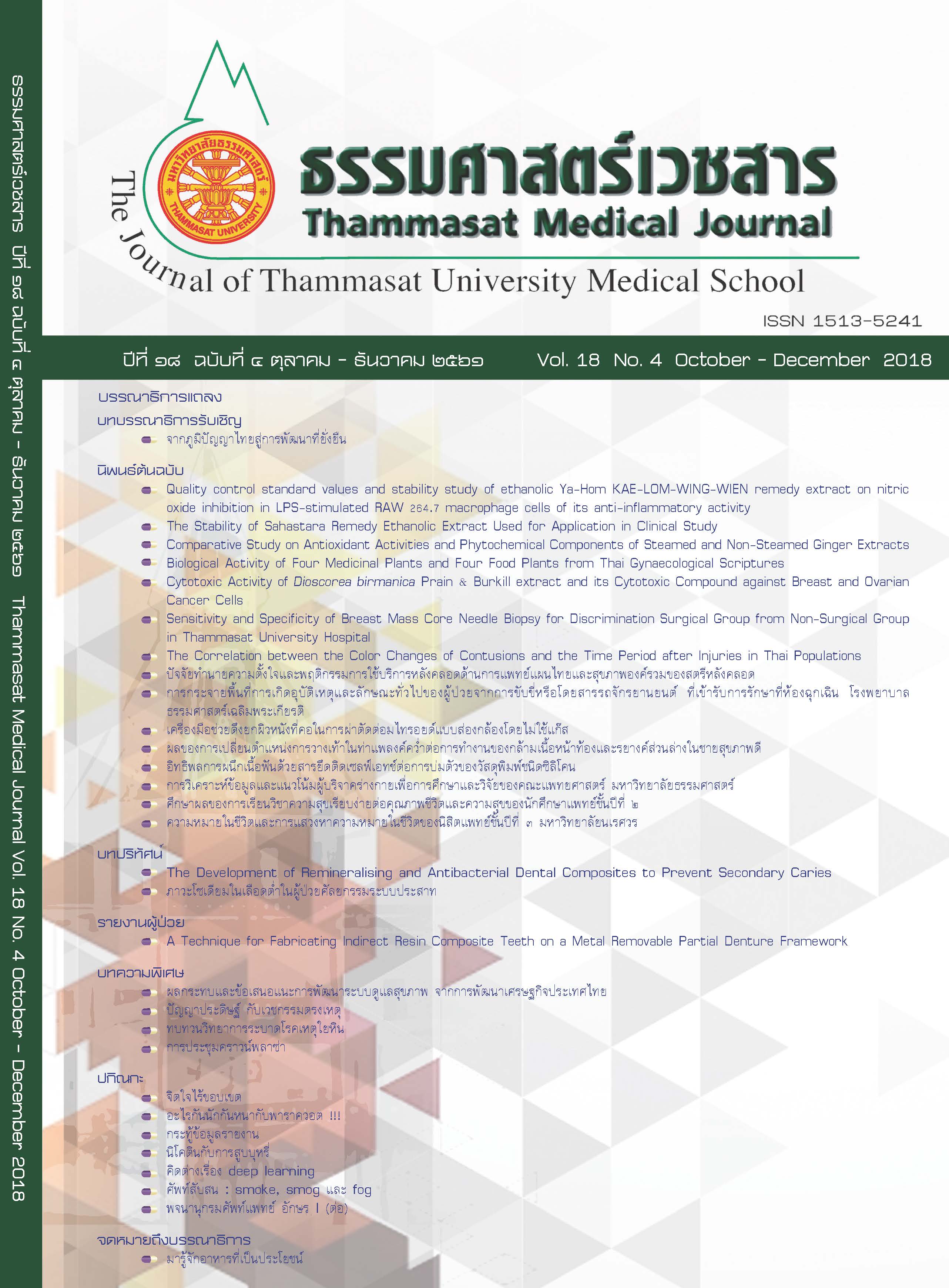The Development of Remineralising and Antibacterial Dental Composites to Prevent Secondary Caries
Keywords:
Dental composite, Secondary caries, Remineralising agent, Antibacterial agentAbstract
The aim of this article was to provide an overview of the current development of remineralising and antibacterial dental composites to reduce bacterial microleakage leading to secondary caries which is the most common reason of composite restoration failure. The literature of up to May 2018 from PubMed and Ovid was reviewed using key words; “remineralisation”, “antibacterial”, and “resin composite”. This review demonstrated that remineralising agents in several forms were used to enable calcium and phosphate and/or fluoride ions release from dental composites. In general, the additives successfully enhanced remineralising properties of the composites but inevitably reduced mechanical properties of the composites. The use of nanoparticles and bioactive glasses have shown to maintain composite’s strength. The incorporation of antimicrobial agents into dental composites to promote antibacterial effects have also been investigated. Most of these antimicrobials contain positively charged groups which could interact with negatively charged bacterial cell membrane resulting in bacterial cell lysis. The remineralising and/or antibacterial dental composites showed promising results that could potentially help to reduce the risk of developing secondary caries. This could potentially help to increase the longevity of composite restorations.


